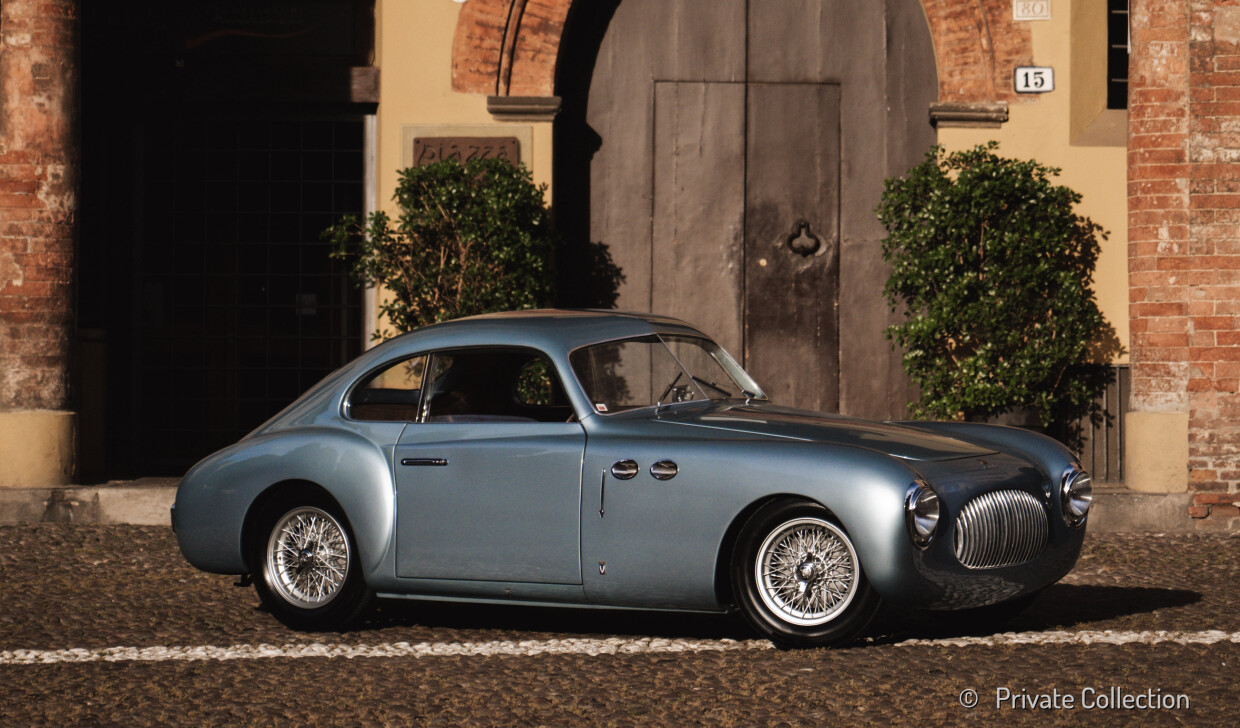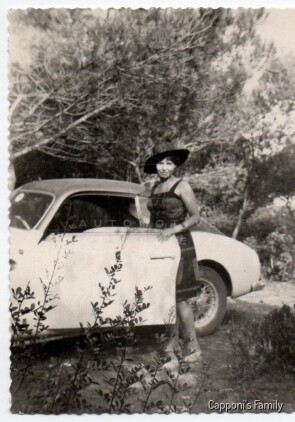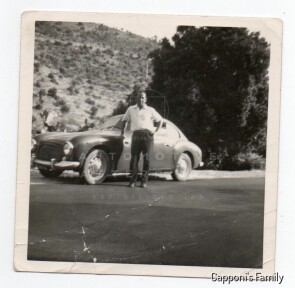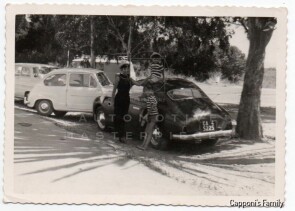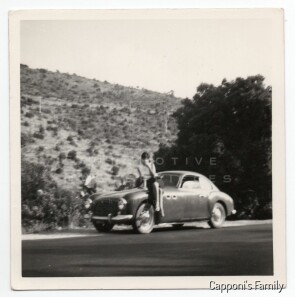
1948 Cisitalia 202 Gran Sport
ON/OFF
Why am I an Automotive Masterpiece?
L. Limited edition cars
no. 153 manufactured
Founded in 1939 by Turinese texile industrialist Piero Dusio to manufacture sports equipment, Consorzio Industriale Sportiva Italia (Cisitalia) amassed a fortune for its former soccer star owner making military uniforms during WW2. An experienced amateur driver, Dusio used his fortune to become involved with the sport he loved. After winning his class on the 1937 Mille Miglia, he began to explore the possibilities of building his own racing cars. Cisitalia's first model was the D46 appeared in 1946, a small single seater which used a tubular steel space-frame chassis crafted at Cisitalia’s bicycle factory to support readily-available Fiat mechanicals as Fiat 1090cc engine and Fiat 500 suspension. After fifty D46s were sold and the model archived a debut victory in the Coppa Brezzi in Turin, Cisitalia focused on building small passenger car based on the D46, including its Fiat components and space frame chassis. In the summer of 1946, the 202 CMM (Coupé Mille Miglia) was initially designed by Dante Giacosa and continued by Giovanni Savonuzzi (hired by Dusio in August 1945). The first coupé was built by Alfredo Vignale, at the time the departmental head of Stabilimenti Farina and allowed him to set up his own carrozzeria. The Cisitalia 202 SMM (Spyder Mille Miglia) was derived directly from the coupé. After Nuvolari epic effort, subsequent competition spiders were known as 202 SMM Nuvolaris. Savonuzzi’s design, was submitted to Battista Pinin Farina as an initial concept for the new coupé 202 Gran Sport and inspired the master to create one of the most significant examples of body styling in automotive history. Cisitalia provided Pinin Farina with the chassis on which the Cisitalia's body was placed. The body was more or less handcrafted, with its aluminum panels shaped over wooden forms. Its shapes are the finishing point of all the previous research: the hood, body, fenders, and headlights are integral to the continuously flowing surface, rather than added on, creating a general sense of beaty and speed. Unveiled in 1947 at the exhibition of Coachbuilders at the Milan Triennale and Paris Motor Show, it won the Coppa d’Oro prize at the Villa d’Este Concours d’Elegance. The Cisitalia 202 Gran Sport was defined as “a rolling sculpture” in 1951 when it was chosen, along with seven other cars, for an exhibition at the Museum of Modern Art in New York (MoMA). The 202 is the progenitor of all modern sports cars stands as a timeless bridge between pre- and post-war sports car design. Its lines had a strong impact on the aesthetics of car design at the time, breaking with tradition and introducing new concepts in style. Coupé versions of the 202 were the first produced. A cabriolet followed. The 202 were built around low-cost Fiat components including a redesigning chassis and a 1089cc four-cylinder engine delivering 66 horsepower. The first Gran Sport model has only two seats and is the first car in history to have the brand name even in the back. The first development, the 202 Berlinetta - or B - can instead accommodate four people (three in front and one, bad, behind) and is distinguished by its more massive grille and chrome bumpers. The 1951 202 C has the the trunk accessible from outside and the rear window wider. The early 202 grill was aluminum and had 23 individual teeth shaped like a "D" with the curved part facing forward, and a narrow surround. The later 202 had a chrome plated grill with 18 thicker teeth and a thicker surround. The twin windscreen was later replaced with a one-piece curved windscreen. The 202 body production by Pinin Farina soon shifted over to Stabilimenti Farina and, to a lesser extent, Vignale. Both built the 202 to Battista Pinin Farina's original design, although there are some differences. It was expensive, and only 170 were produced between 1947 and 1952, 153 coupes and 17 cabriolets.
The specimen, with chassis no. 110SC, is a first series Gran Sport. The attribution of the models for the 202 is not easy even for the Cisitalia experts. It has been ascertained that, from the number 110, cars were assembled with material from both first and second series models. Furthermore, it is known that some chassis numbers were registered without following the numbering attributed to them, most likely because they were assembled by Stabilimenti Farina e Vignale, on specific requests from the customers themselves. Even the attribution of the bodywork is not simple: some sources claim that, from chassis n° 100, they would all have been assembled by Stabilimenti Farina and Vignale but the fact that the chassis may have been bodyworked out of order does not help to clarify the question. From research, it seems that Vignale was the first to adopt the side vents, then taken up by Stabilimenti Farina and introduced, with subsequent modification, on Pinin Farina cars. The chassis no. 110SC dates back to 1948; following the research that made it possible to trace the history of the owners and, from them, to recover some precious period photos, it was possible to establish that the example, previously attributed to Pinin Farina, is instead among those with bodywork by Vignale. Its life has always been in Italy. The first known owner, in 1949, was Francesco Vasaturo. Apulian driver, although Neapolitized, also carried out considerable activity with the Japigia team. It is well known that Vasaturo ran with Cisitalia; the fact that the driver actually used the 110 SC chassis is currently under investigation. The history of the car was then characterized by many changes of ownership. Among these, we recall, in 1952, Giuseppe Rosati, a famous Roman racing driver and, in 1957, the young Nicolò de Renzis, Baron of Montanara and Baron of San Bartolomeo. For thirty years owned by Giacomo Capponi, it was restored and began its long adventure in the world of re-enactments for vintage cars in 1989, at the Mille Miglia, where it participated led by the actor Fabio Testi. The car has recently changed ownership, sold by Automotive Masterpieces, and has once again undergone a careful restoration, which involved, for the mechanical part, the guru of Cisitalia engines, the renowned Delio Galassi.
